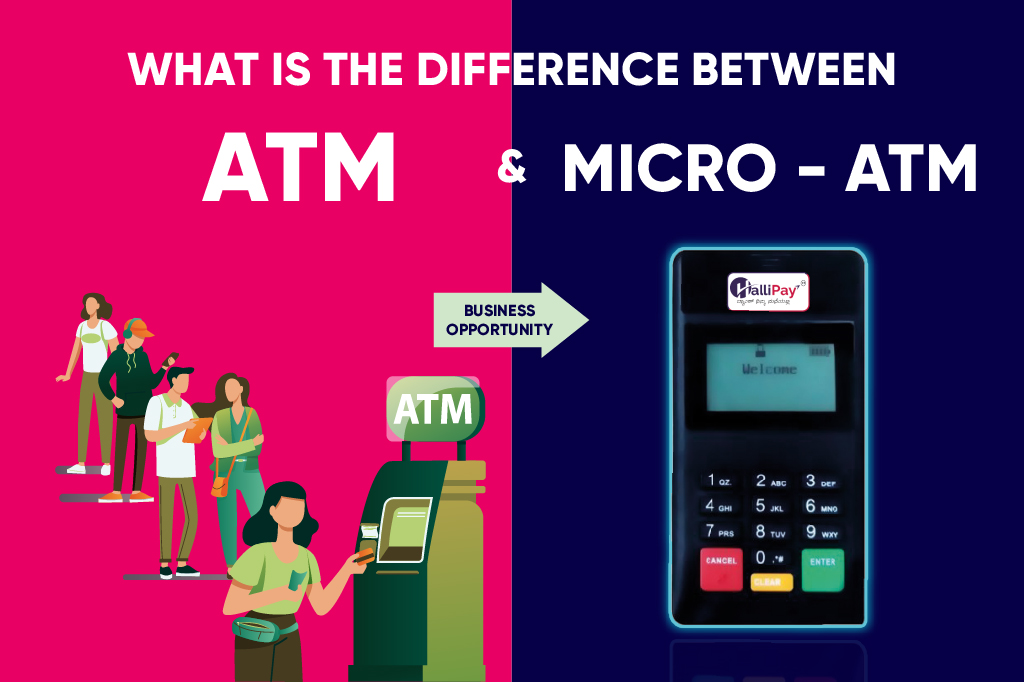ATM (Automated Teller Machine) and Micro-ATM are both financial service terminals, but they serve different purposes and have distinct characteristics.
Here are the key differences between ATM and Micro-ATM:
Purpose and Functionality:
- ATM: Automated Teller Machines primarily serve as cash dispensers and provide basic banking functions. They allow users to withdraw cash, check their account balance, and sometimes deposit money. ATMs are typically found at bank branches, standalone locations, and various public places.
- Micro-ATM: Micro-ATMs, on the other hand, are designed for providing basic banking services in areas where traditional banking infrastructure is limited. They enable various banking functions, including cash withdrawals, deposits, fund transfers, and balance inquiries. Micro-ATMs are often operated by business correspondents, local shop owners, or agents in rural and remote areas to bring banking services closer to communities.
Location:
- ATM: ATMs are usually located in urban and semi-urban areas, as well as at bank branches. They are commonly found in places with higher population density.
- Micro-ATM: Micro-ATMs are strategically deployed in rural and remote areas to extend banking services to underserved populations. They are typically found in local shops, villages, and other locations where traditional banks may not have a physical presence.
Ownership and Operation:
- ATM: ATMs are owned and operated by banks themselves or ATM service providers. They are part of a bank’s network and are maintained by the bank or a third-party ATM management company.
- Micro-ATM: Micro-ATMs are often owned by banks or financial institutions but operated by local agents or business correspondents. These agents facilitate transactions on behalf of the bank and are responsible for the day-to-day operation of the Micro-ATM.
Connectivity:
- ATM: ATMs typically require a constant internet connection to access the bank’s database for transaction processing. They are usually connected via dedicated lines or broadband connections.
- Micro-ATM: Micro-ATMs can operate in areas with limited or intermittent connectivity. They are designed to work with a variety of communication technologies, including GPRS (General Packet Radio Service) and USSD (Unstructured Supplementary Service Data), making them suitable for remote locations with poor network infrastructure.
In summary, while both ATMs and Micro-ATMs provide access to banking services, their scope, functionality, and target locations differ significantly. ATMs are more common in urban areas and primarily serve cash-related functions, whereas Micro-ATMs are deployed in rural and underserved areas to offer a broader range of banking services and help promote financial inclusion.

